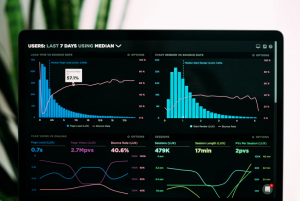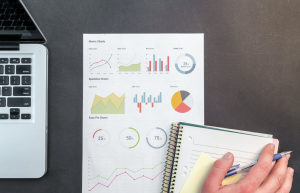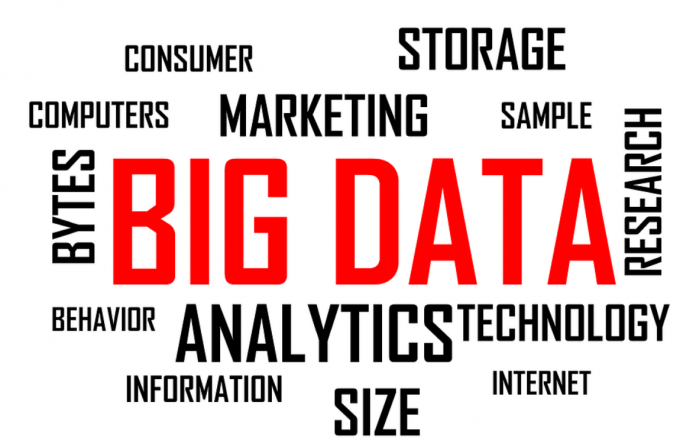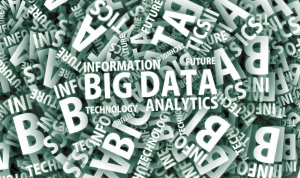Before getting into the depth of analyzing big data, defining big data comes first. Thus, as the name suggests, big data is a huge load of either structured or unstructured data of daily company transactions. But it is not about the volume of the data. Rather, what matters the most is how you deal with or analyze them. The bulk of data analytics output can greatly help business entities, particularly when analyzed accordingly.
Big data is difficult or almost impossible to discern using the old method, but this data is as important as the other. It contains relevant information when analyzed, which can there on contribute to a company’s advancement.
Data Growth

On the recent IDC report for the year 2020, the global data creation reached 64.2 zettabytes. That is 20.2 zettabytes higher than their estimated world data generation (44 ZB) at the earlier time of the year. Therefore, data generation is anticipated to grow even more in the upcoming years as people march forward in this digital world.
What good results can people get from this vast amount of data? With this large amount of generated data, companies or business organizations can get the best out of it through analytics. The outcome from analyzing big data can be used for the company to improve and move on a larger scale.
With this, if you know how to handle big data, no matter what business you are on, you will always be on-trend and up to date for enhancement.
How to Deal with Big Data to gain Better Insights?

Through analytics, big data can be a great tool to help your business succeed. Because of this, organizations tend to hire data analysts. There are even some who opt to attend courses on data analysis. But it is not as easy because dealing with a vast amount of data is a complex task.
So, the first thing and foremost that you should consider is the problem you are aiming to resolve. Hence, you will be dealing with a bunch of data. Having an idea of what your goals are will help you decide what approach to do.
Knowing and having a strategy to handle big data is an edge of a business entity. Thus, in Sentient, 5 steps of dealing with a large amount of data were proposed. It was inspired by the author of “Data Divination: Big Data Strategies,” Bob Gourley.
1. Divide Up
Consider big data as a heap of small data that can give you a load of insights to use. By the use of custom audiences, a user email can be retargeted to other platforms, but you should first consider whom to target. With this, you will be able to gather enough responses, which can help you have better insights. The more information you gain so as, the more information you can have, you will be able to subject for analysis.
2. Spread out
Now that you have classified your prospect group, you may now consider analyzing your accumulated disparate data. There are many options for you to analyze data (structured or unstructured) in considering what you are aiming for. These are some strategies that you may take into account;
Data Mining
To find out more business intelligence, data mining is used to analyze numbers of data. This process enables organizations to extenuate threats, resolve problems and learn new insights. It also applies to clickstream data. What is clickstream data, though? Clickstream data contains a detailed log of a visitor in a webpage, such as time spent, visited pages, and so on, which can be analyzed to extract new insights.
Cluster Analysis
This strategy involves grouping of objects or data with similarity and analyze individual cluster, and see how it is similar or different from each other. With this, it will be easier to check data.
Predictive Modeling
This strategy to analyze big data involves the use of data mining and machine learning to come up with a prediction. Drawing a model of the forecast outcome may help businesses to prepare and plan products for future use. Having knowledge of what trend might come next after another will really be beneficial for those who desire advancement.
Textual analysis
With the employment of an algorithm that is designed with a natural language processor that can translate vast data of text into a quantitative one. This data output can produce patterns, insights, and trends, which is a great help to execute a better stratagem.
3. Catch Up
Be updated at all times. Being left behind in this fast-changing digital world may incur a great loss on your business progress. The real-time analysis does not just make you updated but also makes your company more flexible. Hence, you are taking action in real-time. Businesses involving eCommerce make use of big data to come up with reasonable pricing for certain circumstances. Thus, this strategy is relevant.
4. Suit Up
Basically, in order to analyze big data, easily suiting up your data will be easier. For example, if your data has lots of information, it will be harder to pick the data that you only need to analyze. Like, when you have to analyze with numbers but somehow it is mixed up with other data, it will be harder to decipher.
So, the best thing you can do is dressing up your data with relevant and interesting charts or graphs. It can be done amazingly with the help right tool for analyzing, which can help you draw visualizations of your data easily.
5. Watch Out
Analyzing big data enables you to save money, time, and effort, but you should always be as keen convenient as it is. Hence, big data includes information that might be too personal. If you do not watch out for what you are inputting, you might violate some privacy matters. So, using a genuine and reliable platform is the best way to avoid having such an issue.
This matter particularly but not limited to organizations that store and analyze confidential information such as health organizations, government, and the likes. There are many web development trends for analyzing big data that certainly have a lot of benefits and perks, but you should always be mindful and have a policy that would ensure big data health or safety.




































